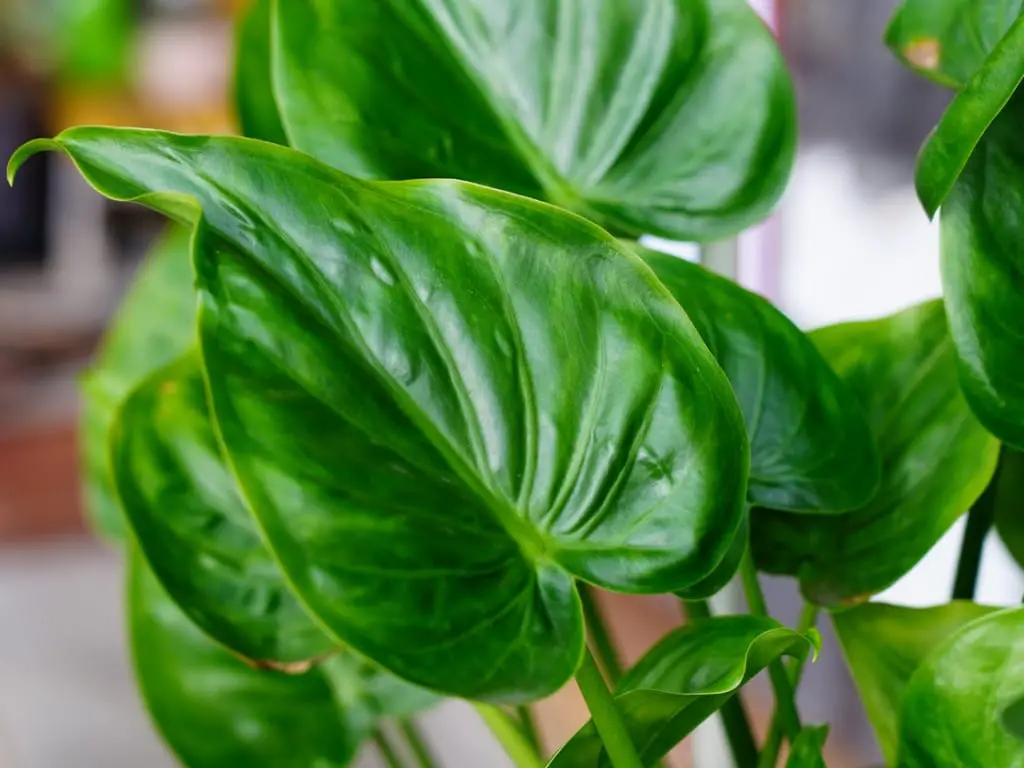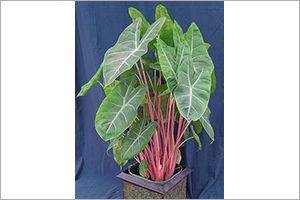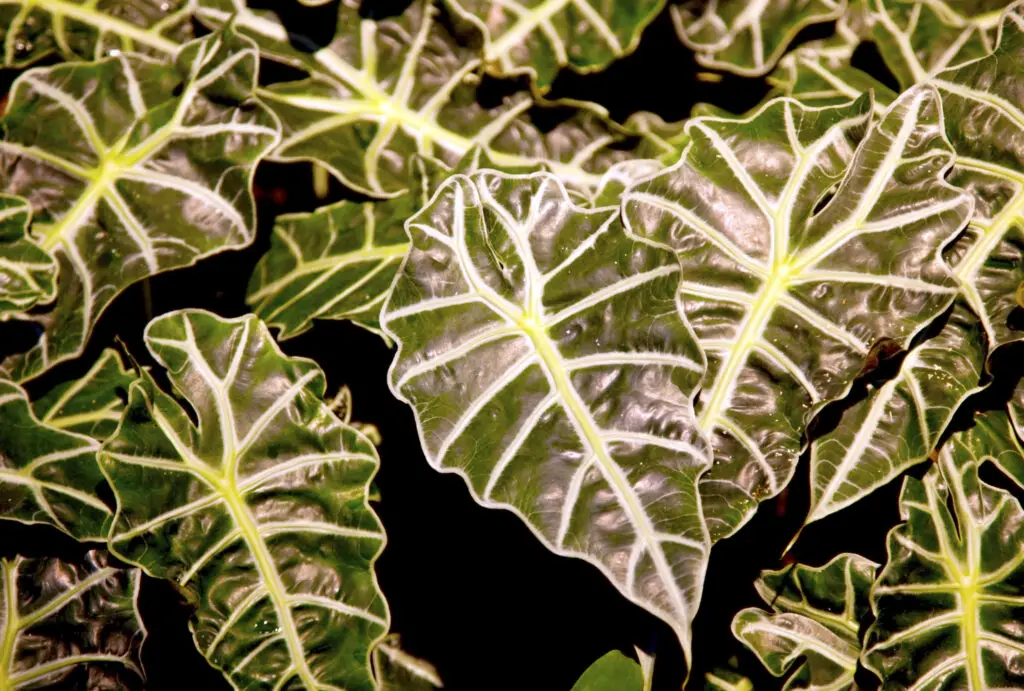Alocasia plants are considered toxic to cats. They contain calcium oxalate crystals, which can cause irritation and discomfort if ingested.
Understanding Alocasia Plants
Alocasia, commonly known as elephant ear plants, are popular houseplants due to their striking foliage and unique appearance. These plants belong to the Araceae family and are native to tropical regions. Their large, arrow-shaped leaves can add an exotic touch to any indoor or outdoor space. However, while they are visually appealing, it is essential for pet owners to know about their potential toxicity.

The primary concern with Alocasia plants is their composition. They contain calcium oxalate crystals, which can lead to various health issues for pets, particularly cats and dogs. When these crystals are chewed or ingested, they can cause irritation in the mouth, throat, and gastrointestinal tract. Understanding the signs of toxicity is crucial for pet owners who have Alocasia in their homes.
How Alocasia Affects Cats
If a cat ingests any part of an Alocasia plant, it may exhibit several symptoms due to the toxic nature of the plant. Common signs of poisoning include:
- Drooling
- Vomiting
- Difficulty swallowing
- Oral irritation
- Loss of appetite
These symptoms can vary depending on the amount of plant material consumed and the individual cat’s sensitivity. In some cases, the symptoms might be mild, while in others, they can be more severe. It is essential for pet owners to monitor their cats closely if they suspect ingestion.

What to Do If Your Cat Ingests Alocasia
If you believe your cat has eaten any part of an Alocasia plant, it is important to act quickly. Here are steps you should take:
- Remove the cat from the area where the plant is located to prevent further ingestion.
- Examine your cat for any visible symptoms of distress or discomfort.
- Contact your veterinarian or an emergency pet clinic immediately for guidance.
- If possible, bring a sample of the plant to help the veterinarian assess the situation.
Prompt action can make a significant difference in your cat’s health. Ensure that your veterinarian is aware of the situation so they can provide the best possible care. In many cases, treatment may involve supportive care such as hydration and medications to alleviate symptoms.
Preventing Alocasia Poisoning
The best way to protect your cat from Alocasia toxicity is prevention. Here are some tips for pet owners:

- Keep Alocasia plants out of reach of pets.
- Consider using hanging planters or high shelves for placement.
- Provide alternative safe plants for your cat to explore.
- Educate yourself about other common houseplants that may be toxic to pets.
By taking these precautions, you can enjoy the beauty of Alocasia plants while keeping your feline friends safe. It’s always better to err on the side of caution when it comes to your pet’s health.
The Importance of Plant Awareness
As a responsible pet owner, being aware of the plants in your home is vital. Not only does this knowledge protect your pets from harmful substances, but it also allows you to create a safe environment for them to thrive. Many common household plants can be toxic to pets, so staying informed about which plants are safe is essential.
In conclusion, being proactive in understanding the toxicity of Alocasia plants can help prevent unfortunate incidents that may affect your beloved cats. Always consult with a veterinarian if you have concerns about your pet’s health or if you suspect they have ingested something harmful.
Identifying Symptoms of Alocasia Toxicity in Cats
Recognizing the symptoms of Alocasia toxicity is crucial for any cat owner. Early detection can lead to quicker treatment and better outcomes. The symptoms can range from mild to severe, depending on the amount consumed and the individual cat’s reaction. Here are some common signs to look out for:
- Drooling: Excessive salivation is often one of the first signs of discomfort.
- Vomiting: Cats may vomit as a response to ingesting toxic substances.
- Oral irritation: Cats might paw at their mouths or show signs of distress when trying to eat.
- Swelling: Inflammation of the mouth, throat, or tongue can occur.
- Loss of appetite: Affected cats may refuse to eat due to pain or discomfort.
- Difficulty swallowing: This can be a direct result of swelling or irritation in the throat.
If you notice any of these symptoms, it is essential to seek veterinary care promptly. Your veterinarian can perform an examination and provide appropriate treatment based on your cat’s condition.
How to Create a Safe Environment for Your Cat
Creating a pet-friendly home involves more than just removing toxic plants. It requires a comprehensive approach to ensure your cat’s safety and well-being. Here are some strategies to create a safer environment:
- Research Plant Varieties: Before bringing any plant into your home, check its toxicity level. Many online resources and databases provide this information.
- Choose Non-Toxic Plants: Opt for houseplants that are safe for pets. Some popular non-toxic options include spider plants, Boston ferns, and bamboo palm.
- Designate Plant-Free Zones: Create specific areas in your home where plants are not allowed, especially if you have curious cats.
- Educate Family Members: Ensure everyone in your household understands which plants are toxic and the importance of keeping them away from pets.
- Use Deterrents: Consider using pet-safe deterrents around plants, such as citrus peels or commercial sprays that discourage chewing.
Implementing these strategies can significantly reduce the risk of plant-related accidents and keep your feline companions safe.
Popular Non-Toxic Alternatives to Alocasia
If you love the aesthetic of Alocasia but want to avoid the risks associated with their toxicity, consider some beautiful non-toxic alternatives. Here are a few options:
- Ponytail Palm (Beaucarnea recurvata): This plant has a unique appearance and is safe for pets.
- Parlor Palm (Chamaedorea elegans): Known for its graceful fronds, this palm is a great choice for indoor greenery.
- Bamboo Palm (Chamaedorea seifrizii): This palm adds a tropical vibe and is safe for cats.
- Spider Plant (Chlorophytum comosum): A resilient plant that purifies the air and is non-toxic to pets.
- Ponytail Plant (Beaucarnea recurvata): This unique plant has a bulbous base and long, cascading leaves, making it visually appealing.
These alternatives provide beauty without the risk of toxicity, allowing you to enjoy plants in your home while ensuring your cat’s safety.
The Role of Veterinary Care in Plant Toxicity
Your veterinarian plays a critical role in managing any potential cases of plant toxicity. Here are some ways they can assist:
- Diagnosis: A veterinarian can diagnose the severity of the toxicity through physical examinations and medical history.
- Treatment Options: Depending on the situation, treatment may include inducing vomiting or administering activated charcoal to minimize absorption of toxins.
- Ongoing Support: Your vet can provide guidance on managing symptoms at home and ensuring your cat’s recovery.
- Preventive Advice: Vets can recommend safe plants and strategies for creating a pet-friendly environment.
Establishing a relationship with your veterinarian and consulting them about any concerns regarding plants and your cat’s health is essential for ensuring their well-being.
The Importance of Education and Awareness
Understanding the potential dangers that certain plants pose to pets is vital for all cat owners. By educating yourself about plant toxicity and recognizing the signs of poisoning, you can create a safer living space for your furry friends. Regularly reviewing information on toxic and non-toxic plants will empower you to make informed decisions regarding your home’s greenery. Always remember that your cat’s safety should be the top priority when selecting houseplants.
Common Misconceptions About Alocasia and Cats
When it comes to Alocasia plants, there are several misconceptions that can lead to misunderstandings about their safety for cats. Clarifying these myths can help pet owners make informed decisions. Here are some of the most common misconceptions:
- All Houseplants Are Safe: Many people assume that houseplants are harmless. However, numerous plants, including Alocasia, can be toxic to pets.
- Only Certain Parts Are Toxic: Some believe only specific parts of Alocasia are harmful. In reality, all parts of the plant can be toxic if ingested.
- Cats Avoid Toxic Plants: It is a common belief that cats instinctively avoid toxic plants. However, curious cats may nibble on plants without understanding the risks.
- Symptoms Are Always Severe: Some pet owners think that if their cat doesn’t show severe symptoms, they have nothing to worry about. Mild symptoms can still indicate toxicity and should not be ignored.
By addressing these misconceptions, cat owners can be more vigilant and proactive in preventing potential poisoning incidents.
The Role of Calcium Oxalate in Toxicity
Calcium oxalate crystals are the primary compounds responsible for the toxicity of Alocasia plants. These tiny crystals are found in the tissues of the plant and can cause irritation when the plant is chewed or ingested. Here’s how they affect cats:
- Mouth and Throat Irritation: When the crystals come into contact with soft tissues, they can cause immediate pain and irritation.
- Gastrointestinal Distress: Ingestion may lead to vomiting and diarrhea as the body tries to expel the irritant.
- Increased Salivation: The irritation often triggers excessive drooling as the cat attempts to alleviate discomfort.
Understanding the role of calcium oxalate helps pet owners recognize why Alocasia poses a risk to their cats and emphasizes the importance of keeping these plants out of reach.
Safe Plant Care Practices
If you choose to keep Alocasia plants in your home, implementing safe care practices is essential to minimize risks. Here are some tips for safe plant care:
- Place Plants High: Position Alocasia plants on high shelves or in hanging pots to prevent easy access for your cat.
- Monitor Plant Condition: Regularly check your plants for signs of damage or decay, which may attract a cat’s attention.
- Limit Interaction: Avoid allowing your cat to interact with the plants during watering or maintenance.
- Use Barriers: Consider using physical barriers like decorative screens or plant cages to keep cats away from toxic plants.
By following these practices, you can enjoy your Alocasia plants while ensuring the safety of your feline friends.
Recognizing Plant-Related Behavior in Cats
Cats are naturally curious creatures, and their behavior around plants can often give clues about their interest or potential danger. Here are some behaviors to watch for:
- Pawing at Plants: If your cat frequently paws at or swats at plants, it may be trying to play or explore.
- Taste Testing: Cats often nibble on plants out of curiosity. If you notice your cat chewing on an Alocasia, it’s important to intervene immediately.
- Hiding Near Plants: Cats may hide near or under plants for comfort. This behavior could lead to accidental ingestion if they feel secure enough to explore nearby foliage.
Being aware of these behaviors allows pet owners to act quickly and prevent any potential harm from occurring.
The Benefits of Non-Toxic Plant Choices
Choosing non-toxic plants not only safeguards your pets but also enriches your home environment. Here are some benefits of selecting safe plant alternatives:
- Peace of Mind: Knowing that your plants are safe allows you to enjoy your greenery without worry.
- Aesthetic Appeal: Many non-toxic plants offer beautiful foliage and flowers, adding vibrancy to your space.
- Better Pet Health: Non-toxic plants contribute to a healthier environment for your pets, reducing stress for both you and your furry friends.
By opting for non-toxic options, you can create a beautiful and safe living space that benefits everyone in your household.
Consulting Resources for Plant Safety
For pet o
wners looking to educate themselves about plant toxicity, numerous resources are available. Here are some helpful options:
- Veterinary Websites: Many veterinary clinics and organizations provide lists of toxic and non-toxic plants.
- Local Extension Offices: Cooperative extension services often provide valuable information on plant care and safety.
- The ASPCA Website: The American Society for the Prevention of Cruelty to Animals maintains an extensive database of toxic plants that is accessible online.
Utilizing these resources can help you stay informed and maintain a safe environment for your pets while enjoying your passion for gardening and houseplants.
Understanding the Impact of Plant Choices on Pet Safety
The choice of plants in your home can significantly impact the safety and health of your pets. As we have explored, Alocasia plants are toxic to cats due to the presence of calcium oxalate crystals. This toxicity can lead to various health issues, emphasizing the importance of making informed decisions about the plants you introduce into your living space.
Moreover, it is not just Alocasia that poses risks; many common houseplants can be harmful to pets. By familiarizing yourself with both toxic and non-toxic plant varieties, you can create an environment that is both beautiful and safe. This awareness is an essential part of responsible pet ownership.
Creating a Pet-Friendly Garden
If you enjoy gardening, creating a pet-friendly garden is a rewarding endeavor. Here are some tips for establishing a garden that both you and your pets can enjoy:
- Incorporate Non-Toxic Plants: Select plants known to be safe for pets. Options include marigolds, snapdragons, and petunias.
- Designate Play Areas: Create specific areas where your pets can safely play without disturbing the plants.
- Use Mulch Wisely: Some mulches, like cocoa mulch, can be toxic to pets. Opt for pet-safe alternatives such as cedar or pine.
- Avoid Chemical Pesticides: Many pesticides can be harmful if ingested by pets. Choose organic or pet-safe pest control methods.
By implementing these strategies, you can cultivate a vibrant garden while ensuring the safety of your furry companions.
Monitoring Your Pets’ Behavior
Keeping an eye on your pets’ behavior around plants is essential for their safety. Cats are naturally curious and may explore plants out of instinct. Here are some behaviors to monitor:
- Frequent Sniffing or Nibbling: If your cat shows excessive interest in a particular plant, it could indicate a risk of ingestion.
- Changes in Appetite: A sudden loss of interest in food may signal discomfort from ingested plant material.
- Unusual Grooming Behaviors: Watch for signs of excessive grooming, which may indicate irritation from plant toxins.
Being vigilant about these behaviors can help you intervene before any harmful ingestion occurs.
Consulting with Experts
If you ar
e ever unsure about a plant’s safety or how to manage your cat’s interaction with plants, do not hesitate to seek advice from professionals. Veterinarians, botanists, and local horticulturists can provide valuable insights into safe plant choices and care practices.
Joining online forums or community groups focused on pet care and gardening can also be beneficial. These platforms allow you to share experiences and gather tips from other pet owners who have faced similar challenges.
Final Thoughts
In conclusion, understanding whether Alocasia plants are toxic to cats is crucial for any pet owner. The toxicity of these beautiful plants highlights the need for vigilance and education regarding household greenery. By being informed about plant safety, recognizing symptoms of toxicity, and choosing non-toxic alternatives, you can create a safe environment for your feline companions.
The journey to maintaining a pet-friendly home involves research, preparation, and ongoing awareness. Utilize available resources to continuously educate yourself about plant safety. By doing so, you ensure that your home remains a sanctuary for both your plants and your beloved pets.
Ultimately, the goal is to strike a balance between enjoying the beauty of nature indoors and protecting the health and safety of your pets. With careful planning and consideration, it is possible to achieve this harmony, allowing both your plants and pets to thrive in a safe and nurturing environment.
